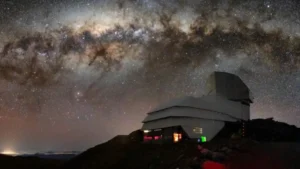In the search for extraterrestrial life, a little moisture can cause a lot of excitement.
That’s the case with the latest news from the James Webb Space Telescope this week, which reported water vapor coming off a rocky planet. The vapor might mean the exoplanet — meaning any planet outside our solar system — has an atmosphere.
That would be a big discovery in the ongoing search for habitable planets other than our own.
But don’t start packing your space luggage just yet. NASA scientists said the vapor could just be coming from the planet’s host star.
“Water vapor in an atmosphere on a hot rocky planet would represent a major breakthrough,” said Keven Stevenson, principal investigator behind the findings. “But we must be careful and make sure that the star is not the culprit.”
26 light-years away
The exoplanet in question, with the catchy name GJ 486 b, orbits a red dwarf star about 26 light-years away from Earth, in the Virgo constellation.
This planet (let’s call it GJ for short) is less than a third the size of Earth but has three times the mass. It takes GJ about one-and-a-half days to orbit its star. Also, it is probably “tidally locked,” which means it perpetually shows the same face to the star.
Scientists are keen to learn if the planet could hold an atmosphere long enough for life to take root.

This graphic shows the transmission spectrum obtained by Webb observations of rocky exoplanet GJ 486 b. The science team’s analysis shows hints of water vapor; however, computer models show that the signal could be from a water-rich planetary atmosphere (indicated by the blue line) or from starspots from the red dwarf host star (indicated by the yellow line). Additional observations are needed to understand the source of the water signal.
Image: NASA, ESA, CSA, Joseph Olmsted (STScI)
Star unlikely to permit life
But red dwarf stars might make life on the exoplanet impossible. The stars emit violent radiation that would probably destroy the atmospheres of any planet that got too close, making them inhospitable to the fragile needs of life. It took a billion years for life to form on Earth; life needs a stable atmosphere over time.
Despite its close proximity to the star and its slightly muggy temperature of 430˚C, the astronomers still saw traces of water vapor.

The James Webb telescope orbits Earth at night. Photo: Shutterstock/NASA
They were searching for chemical fingerprints in atmosphere-filtered starlight with a process called “transmission spectroscopy.” See that flat spectrum in the graph above? With a peak in shortwave infrared light? They think that’s “almost certainly” water vapor.






